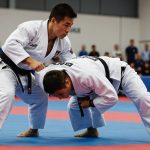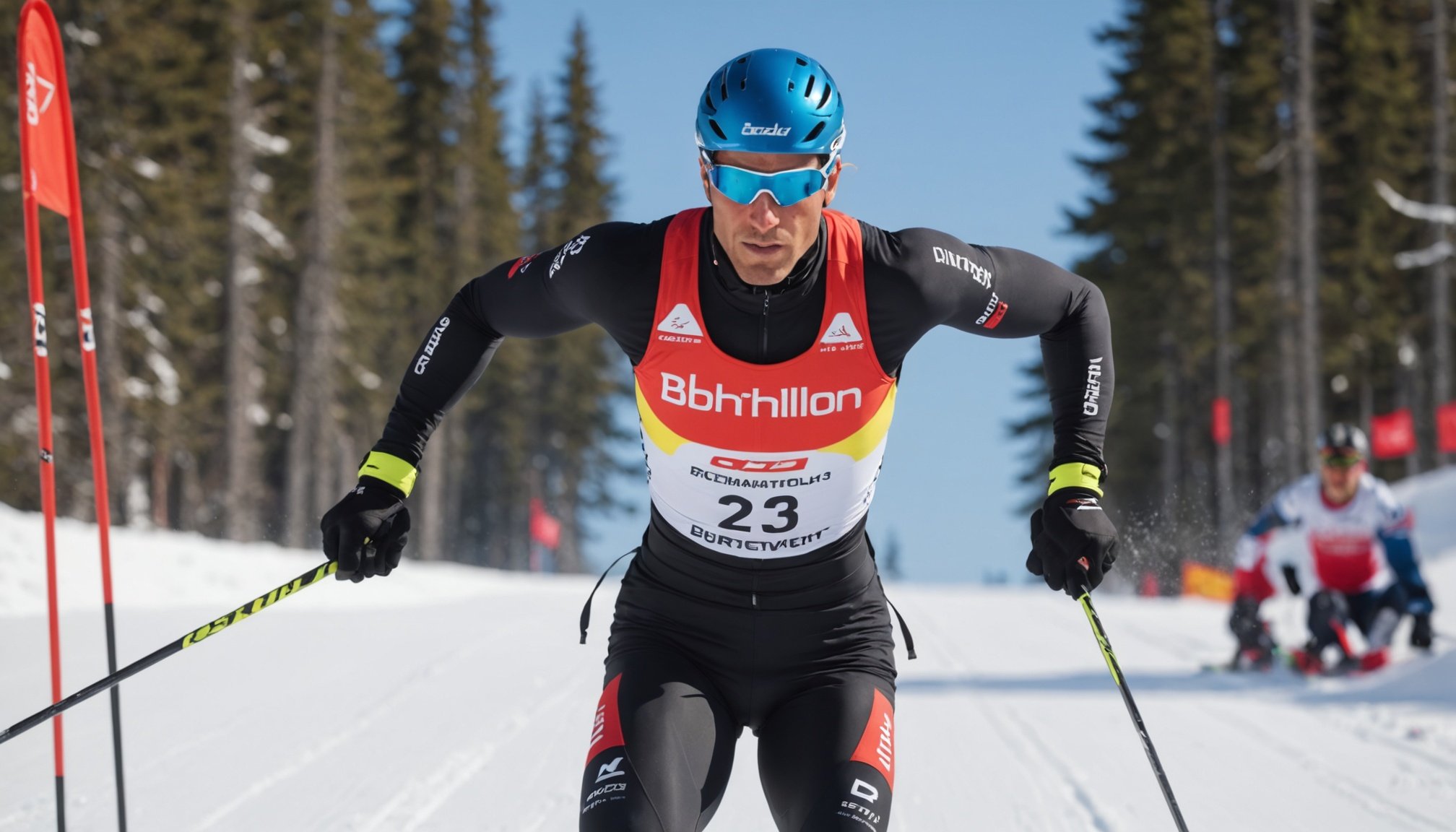H2 – Overview of Biathlon and Skiing Efficiency
Biathlon is an exhilarating sport that uniquely combines cross-country skiing with rifle shooting, pushing athletes to excel in both endurance and precision. Skiing efficiency is crucial in this sport, as it directly influences overall performance and energy conservation on the course. The skillful negotiation of terrain and the ability to maintain speed are paramount for success.
Understanding the importance of skiing efficiency involves analysing how athletes manage their energy expeditiously. This is essential not only for reducing time spent skiing but also for ensuring better shooting accuracy, given that fatigue can adversely affect focus and poise.
Topic to read : Game-changing tactics for athletes to minimize concussion risks in american football
Strength training is a cornerstone of enhancing skiing efficiency due to its role in boosting an athlete’s overall performance. Effective strength training programs can significantly improve the relationship between strength and skiing, enhancing a skier’s power, stability, and balance on varying terrain. By focusing on the key muscle groups used in skiing, such as the core, legs, and upper body, athletes can achieve more efficient ski propulsion and greater endurance.
In summary, the intertwining of biathlon demands and skiing efficiency creates a compelling narrative of endurance, strength, and technical skill, where biathletes continuously seek innovative strategies to refine their capabilities.
In the same genre : Ultimate guide to preventing muscle cramps for long-distance runners during races
Key Strength Training Techniques for Biathlon
Incorporating strength training into a biathlon regimen is essential for enhancing performance and efficiency on the course. Biathletes benefit significantly from exercises designed to boost endurance, power, and stability. Understanding the principles of strength training aids in tailoring exercises that meet the specific demands of the sport.
Focusing on compound movements such as squats, lunges, and deadlifts can greatly impact skiing performance. These exercises engage multiple muscle groups simultaneously, simulating the dynamic movements required in skiing. They not only build strength but also improve balance and coordination—crucial elements for managing varied terrains.
Cross-training is another integral component, providing a diversified approach to developing overall strength and endurance. Activities like cycling, swimming, and rowing enhance cardiovascular fitness while minimizing the risk of overuse injuries. This variety keeps training interesting while targeting different muscle groups, ensuring comprehensive conditioning.
In essence, a strategic combination of compound exercises and cross-training activities can significantly elevate a biathlete’s performance. It’s about not only lifting weights but also building a versatile fitness foundation that supports the physical demands of both skiing and shooting in the biathlon.
Targeted Strength Exercises to Enhance Skiing Efficiency
Developing strength is crucial for improving skiing performance, particularly in the biathlon. By incorporating effective exercises that target specific muscle groups, athletes can enhance their skiing technique and endurance.
Upper Body Strength Exercises
Focusing on the arms and shoulders is vital for effective ski propulsion. Exercises such as pull-ups, push-ups, and dumbbell presses bolster these areas. Proper technique, including maintaining straight wrists and controlled movements, maximises outcomes. Strong upper body muscles contribute significantly to maintaining speed and balance on the slopes.
Core Strength Development
Core stability plays a pivotal role in skiing efficiency. To build a resilient core, athletes should engage in planks, Russian twists, and mountain climbers. These exercises improve balance and coordination, which are indispensable for navigating challenging terrain. A solid core foundation directly influences overall skiing technique and helps prevent injuries.
Lower Body Strength Training
Strengthening the legs is essential for enhancing skiing agility and speed. Squats, lunges, and leg presses are ideal exercises to build leg muscles efficiently. Emphasising ankle stability and focusing on correct posture during these routines accelerates performance improvement. Robust leg muscles support powerful strides, leading to better results in biathlon competitions.
Designing a Strength Training Program for Biathletes
Designing an effective training program for biathletes involves balancing diverse exercises with their unique demands. A well-structured program should not only focus on strength training but also incorporate endurance, flexibility, and agility exercises to ensure holistic performance enhancement.
Weekly training schedules for biathletes should ideally distribute strength workouts, cross-training, and recovery periods. For instance, integrating compound movements like squats and lunges on alternate days with high-intensity cardio sessions boosts both muscle growth and resilience. Assigning specific days for core stability can further unify these gains.
The flexibility of the training plan is crucial for maintaining performance throughout the season. Adjustments should be made based on competition demands and individual progress. Regular assessments help tailor conditioning routines to catalyse improvement. Biathletes should aim to match their strength training with skiing drills to translate their physical gains directly onto the snow.
Lastly, it’s essential to periodize the training plan. This includes structuring phases of strenuous workload followed by recovery phases to prevent overtraining and minimize injury risks. Consistent evaluation and modification of the program lead to optimum biathlon performance improvement.
Expert Tips and Strategies for Successful Strength Training
Successful strength training in biathlon demands discipline and strategic planning. Insights from experienced biathletes reveal that understanding your body’s strengths and weaknesses is critical. Personalising your training tips ensures that the program is suited to your unique needs.
Athlete insights suggest several effective strategies. Firstly, avoiding common pitfalls like overtraining or neglecting recovery is essential. Recognising the signs of fatigue and knowing when to rest can prevent burnout and promote consistent biathlon success. Furthermore, monitoring your progress through journals or digital tools helps refine your approach over time.
Some biathletes recommend utilising diverse resources, including apps for tracking workouts or recovery. These tools aid in maintaining motivation and commitment to a rigorous training schedule. Comprehensive training tips focus on balance, highlighting both physical and mental preparation. Building mental resilience is often as vital as physical endurance in the biathlon.
Incorporating feedback from trainers or biometric data can further enhance effectiveness. Customising programs allows for targeted improvements in performance areas most needed. By adopting these strategies, athletes can significantly elevate their strength training effectiveness, translating to better outcomes in biathlon competitions.
Supplementary Resources and Tools
In the world of biathlon, utilising training resources effectively can significantly impact an athlete’s performance enhancement journey. Leveraging tools like video demonstrations and infographics aids in grasping essential strength-building techniques tailored for this sport.
Video Demonstrations of Key Exercises
Engaging with video resources is crucial for assimilating proper biomechanics in biathlon exercises. High-quality videos break down moves such as squats or lunges, offering viewers a chance to observe each motion intricately. This visual aid supports athletes in refining their form, resulting in improved skiing efficiency and reduced injury risk.
Infographics Detailing Training Techniques
Infographics provide a condensed overview of complex performance enhancement strategies. Visual charts simplify understanding of muscle engagements and conditioning benefits, making them accessible for quick reference during training sessions. They serve as a practical tool to reinforce learning and execution of effective exercises.
Testimonials from Successful Biathletes
Real-life success stories add a compelling aspect to training insights. Athlete testimonials reflect the tangible results of dedicated strength training. These narratives not only motivate but also offer valuable perspectives on tackling challenges encountered throughout the biathlon journey, fostering a deeper connection with tailored strength-building methodologies.





